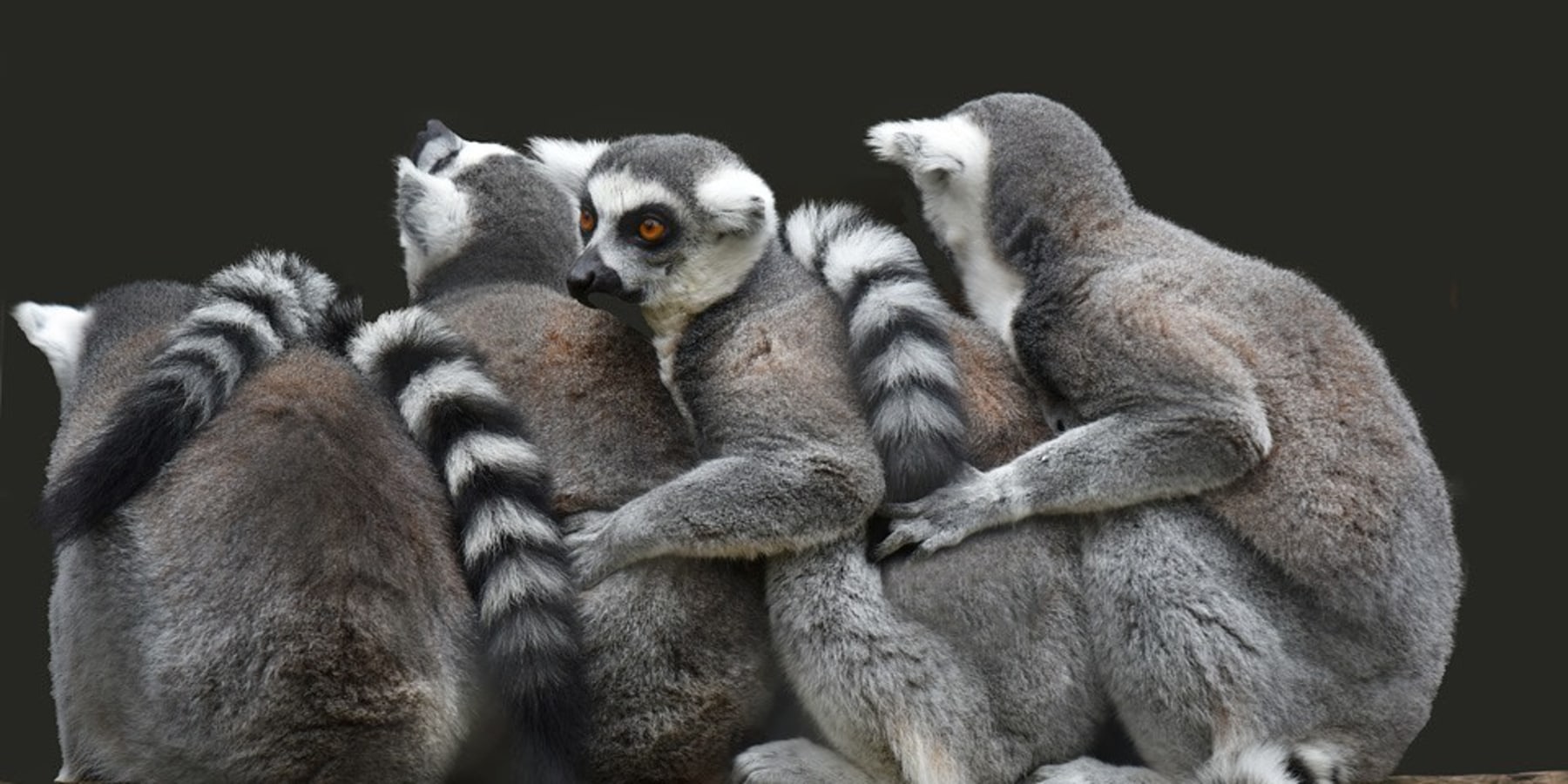
Madagascar is world-famous for its lemurs—primates that look something like a cat crossed with a squirrel and a dog. These animals are unique to the island and display a range of interesting behaviours from singing like a whale (the indri) to sashaying across the sand like a ballet dancer (the sifaka). Below you will learn more about these fascinating creatures.
Lemur History
Madagascar lacks the dominant form of primate distributed worldwide, those of the suborder Haplorhini (monkeys, chimps, gorillas, and Homo sapiens). Instead, their niche has been filled by an older group of primates, the lemurs. Lemurs belong to the sub-order Strepsirhini together with bushbabies, lorises, and pottos which—like the original lemurs—are nocturnal, insectivorous primates characterized by a small body, a long nose, and large eyes. Lemurs have an interesting evolutionary history and the only reason they still exist today is because of Madagascar’s isolation.
Until around 160 million years ago, Madagascar was attached to the African mainland as part of the supercontinent Gondwanaland (formed of Africa, South America, Australia, Antarctica, India, and Madagascar). As Gondwanaland broke apart, Madagascar moved away from Africa. The first lemur-like primates on the fossil record appeared roughly 60 million years ago in mainland Africa and crossed over to Madagascar shortly thereafter.
The island continued to drift eastward and by the time monkeys appeared on the scene 17-23 million years ago, Madagascar was isolated from their arrival. As highly intelligent and adaptive primates, monkeys quickly drove the lemur lineage elsewhere in the world toward extinction (a few Strepsirhines—including bushbabies, lorises, and pottos—managed to hang on by retaining their nocturnal, solitary, and insectivorous traits).
Madagascar’s lemurs—isolated from evolutionary changes of the world—radiated into the large island’s many niches without much competition or predation. Today lemurs are found in virtually all of Madagascar’s ecosystems and share some of the social and behavioural characteristics of monkeys (i.e., forming social groups, eating fruit and vegetation, and being active during the day).
Upper primates did not reach Madagascar until about they learned to navigate the high seas and arrived on boats roughly 2,000 years ago. Humans quickly went to work on the island’s lemurs, reducing the number of species found in Madagascar by at least 15. The largest species suffered the most and today the largest remaining lemur is the Indri which would have been dwarfed by the gorilla-sized species once found on the island. Currently, all lemurs are endangered species, due mainly to habitat destruction (deforestation) and hunting.
Lemurs Today
Today Madagascar is home to nearly 60 taxa of lemurs (species, subspecies, and populations from 33 species across five families and 14 genera) ranging in size from the 25-gram pygmy mouse lemur to the indri. All these species are endemic to Madagascar (two lemur species were introduced to Comoros) giving the country the second-highest number of primate species after Brazil, which has 77 species (only two endemic genera and no endemic families). And new species are still being discovered— primate researchers speculate that 10-20 new species of lemurs may be described over the next generation.
Global Importance of Madagascar’s lemurs
According to Russell Mittermeier in The Eighth Continent, although Madagascar « is only one of 92 countries with wild primate populations, it is alone responsible for 21 percent (14 of 65) of all primate genera and 36 percent (five of 14) of all primate families, making it the single highest priority for primate conservation. Madagascar is so important for primates that primatologists divide the world into four major regions: the whole of South and Central America, all of southern and southeast Asia, mainland Africa, and Madagascar, which ranks as a full-fledged region all by itself.
Behavior
Non-scientists generally group lemurs by their primary time of activity: day or night. Noctural lemurs are typically smaller and more reclusive than their diurnal counterparts. Lemurs are vocal animals, making sounds that range from the grunts and swears of brown lemurs and sifaka to the chirps of mouse lemurs to the eerie, wailing call of the indri, which has been likened to a cross between a police siren and the song of a humpback whale.

